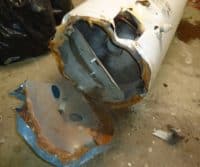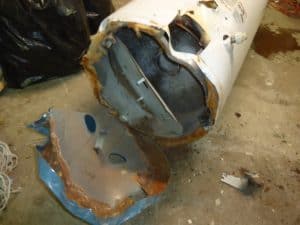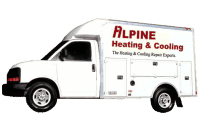 This is a common question that is often asked by homeowners who have never used this type of water heating equipment in the past. In essence, this kind of water heater allows you to have instant access to hot water on demand. This does not mean that the water is hot the very second you turn on the tap. It does take a few minutes for the hot water to reach the tap just like when using a tank system. What makes a tankless system different is that it does not store water and heat it up over and over again throughout the day and night.
This is a common question that is often asked by homeowners who have never used this type of water heating equipment in the past. In essence, this kind of water heater allows you to have instant access to hot water on demand. This does not mean that the water is hot the very second you turn on the tap. It does take a few minutes for the hot water to reach the tap just like when using a tank system. What makes a tankless system different is that it does not store water and heat it up over and over again throughout the day and night.
Wherever Hot Water is Demanded
For better efficiency and energy savings it only heats water when the tap is turned on and water is flowing through the pipes. A tankless water heater can be powered by propane or gas and once the water is heated it travels along pipes to faucets wherever hot water is demanded. As a note, tankless water heaters that are gas powered must be vented through an outside wall. This is different as compared to a tank type water heater where venting typically is directed up and through the attic.
Gas and Water Pipes
In terms of cost management keep in mind that the venting system for a tankless hot water can be quite expensive and in some cases can cost as much as the water heater itself. Always choose to have a professional electrician and plumber install this kind of system in your home. This is especially true considering the fact that gas and water pipes must be correctly routed to allow for the new system to work properly. Even the electrical connections must be installed professionally to ensure that there is never a fire danger or other problems that may arise later. Finally, tankless water heaters can also be powered electrically and are somewhat different than propane or gas powered type tankless water systems.
Professional Electrician and Plumber
This type of electrically powered arrangement works by using heating elements that are located inside the pipes that heat water as it passes by. One advantage of using electrically powered tankless water heaters is that there is no venting required of the system. This is convenient because it means that this version of the system can be placed just about anywhere in your home. As a note, you will still require a professional electrician and plumber to ensure that the system is installed in the right way. Contact Alpine Heating & Cooling today to learn more about Burlington Washington tankless water heater installation services.

It’s Never a Good Time for Water Heater Replacement
Nobody wants their water heater to fail, but every one will fail unless replaced first. Most people are taken by surprise when they need water heater replacement, but it doesn’t have to be that way. By paying attention to the right details, you can avoid the unpleasantness of being without hot water longer than necessary, having an unexpected expense, and possibly avoid significant flood damage to your home. What are the signs of a failing water heater, and when should you look for them?
Is Your Water Heater Past its Prime?
Because water heaters are designed to have a limited useful lifespan, it is important to know when your unit was installed. You can often find the manufacture date on the rating label (or, on older models, decoding the serial number may tell you the manufacture date), but that may not be an accurate representation of how long the unit has been in service.
If you had the water heater put in, you might still have the receipt for the work that was done. Many companies will also put a sticker on the unit when they install it that may includes the installation date. Or, you might be able to give them a call and find out when they installed the water heater.
Once you know how long the water heater has been in service, you can take the appropriate steps to evaluate it. The average lifespan of a water heater is a subject of great debate, but if the unit has been in service at least six years, you should at least inspect it yourself, and may want to have it professionally inspected. If it has been in service more than ten years, look extra carefully for signs of trouble.

This water heater was leaking for some time.
What Problems Should I Look For?
- Noticeably less available hot water or longer recovery time. If you can remember when it was no problem for everyone in the family to take showers one after the other, but now you’re all fighting to take the first shower, you might have an issue with a heater element, dip tube, thermostat, or excessive sediment buildup.
- Visible rust on and/or moisture on or around your water heater. If you see rust and water on the outside or surrounding your unit, it could be nothing, but that isn’t likely. The exterior of your water heater should be clean and dry. If the tank is rusting and water has begun seeping out, a full-blown failure that could include flood damage is impending.
- More than one service call on the unit. Repeated stop-gap measures are often a sign that a water heater is nearing the end of its life. Like an old car, the cost of repeated repairs can often exceed replacement cost while never really solving the problem.
- Metallic smell or taste to your hot water. This could be a sign that the water tank itself is breaking down and will soon fail. Best to have a professional check it out more closely in this case.
- Rumbling and other noise coming from the unit. Water heaters should be nearly silent. You might hear the sound of water simmering or the gas flame burning, but rumbling, banging, or cracking sounds are not good. If you notice any of these when your water heater is in operation, call a professional.
Is There any way to Avoid Failure?
While nothing mechanical lasts forever, there are a few actions you can take to ward off premature failure. Modern water heaters are designed to require little or no maintenance, but the following will make sure you are familiar with the condition of your water heater and give it every advantage.
- Drain the water heater every six months to remove sediment. This will also increase efficiency.
- Test the pressure relief (T&P) valve by lifting the valve’s handle and letting it snap back. This should release a burst of water into the overflow drainpipe, then the flow should stop completely. If it doesn’t, install a new valve.
- Lower the temperature setting on the thermostat(s) to 120 degrees Fahrenheit. This minimizes damage to the tank caused by overheating and protects your home’s occupants from scalding.
Use caution when working with electricity, gas, and hot water. If you are unsure of how to safely do any of the above steps, call a professional for help. Alpine Heating and Cooling replaces and installs tank-type and tankless water heaters, performs maintenance on all brands, and carries out warranty repairs on many popular brands. If you think you might want to replace your tank-type water heater with a new, more efficient tankless water heater, check out our guide to choosing between tank-type and tankless.
Water heater replacement is nobody’s idea of fun, but we do love our work! If you have any questions about your water heater, give us a call. We can come out and give you a free estimate for any needed work. You can reach us at 360-755-5146 or 360-293-6210. We look forward to helping you!

A healthy water heater is clean and dry with no signs of rust.


